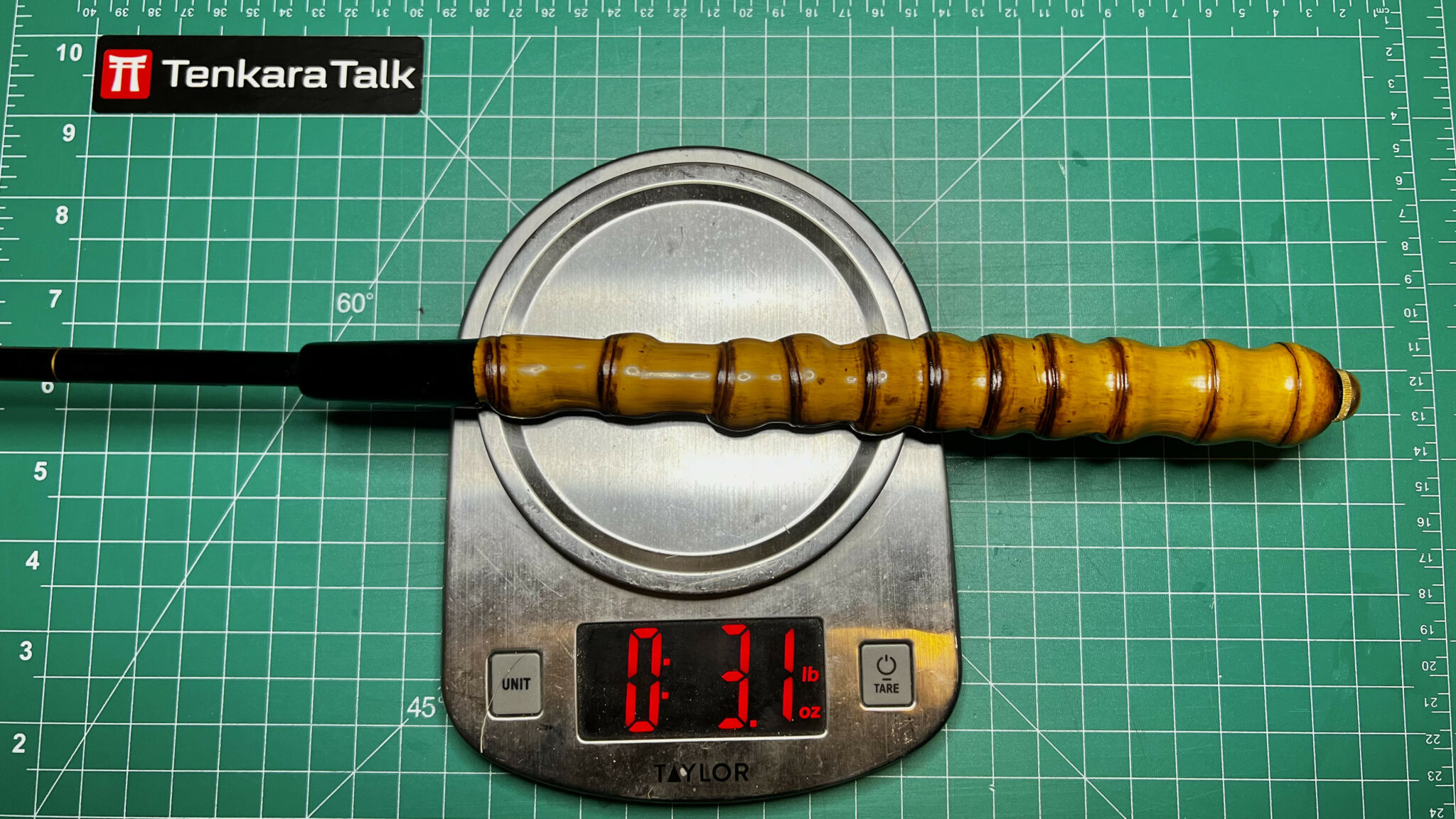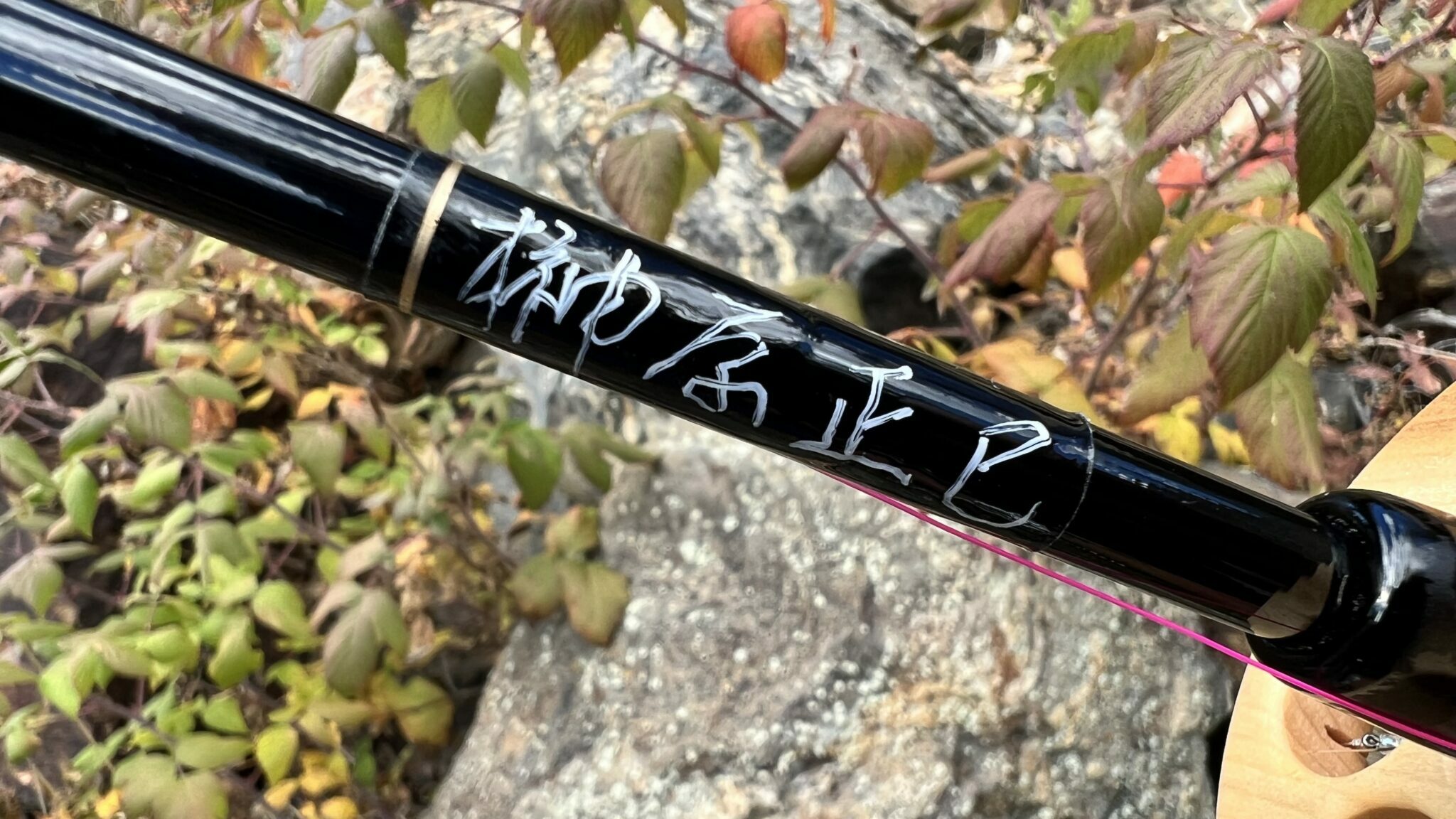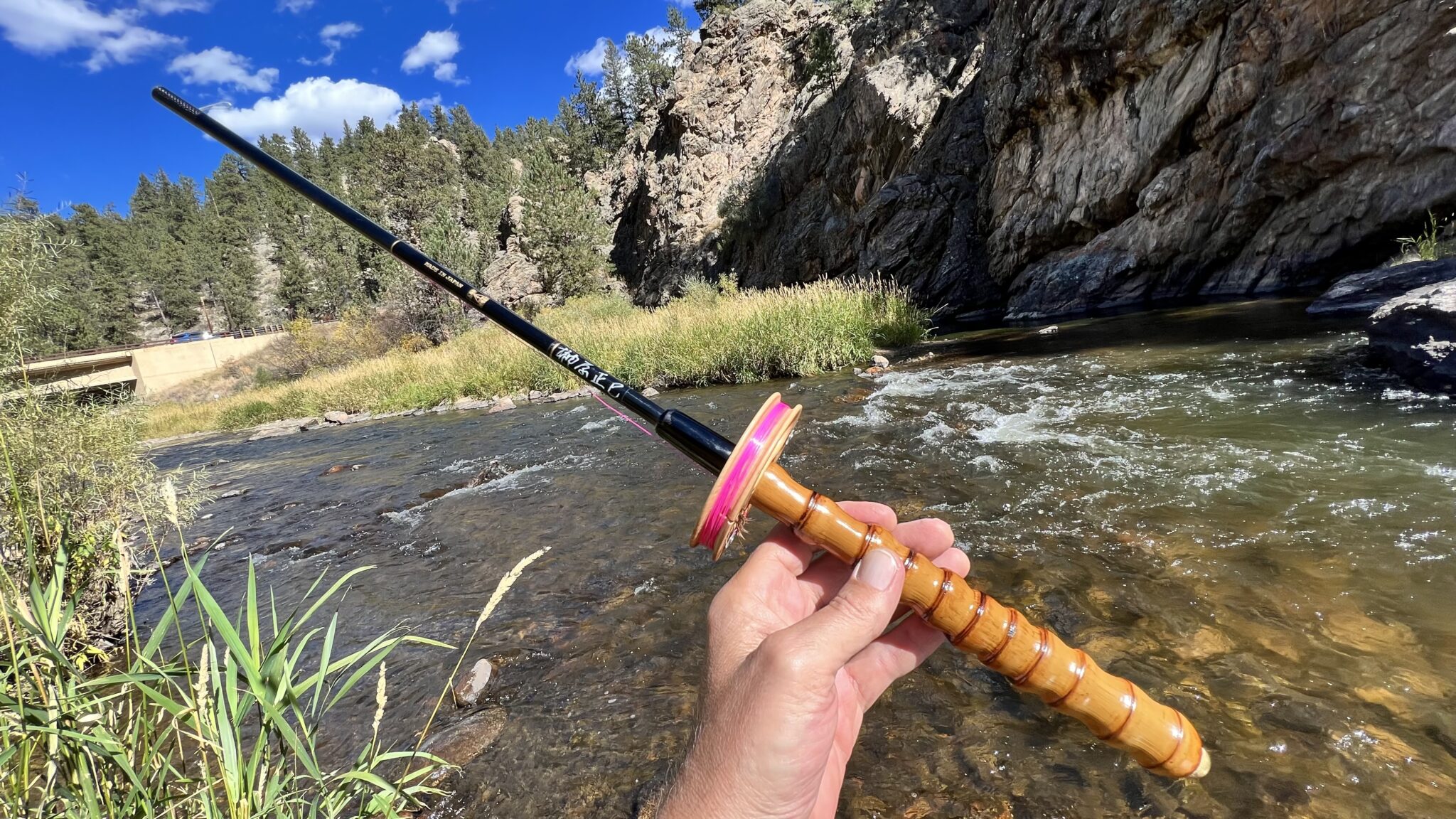
Last year, the stars aligned and I finally added the Itoshiro 340 to my lineup of Oni rods. I’d been thinking about it for a long time but was waiting for the bamboo handle version to become available. I already owned the Type III and while they’re the same length, they’re quite different actions.
The Itoshiro’s stiffer flex and bamboo handle seemed like a winning combination, so when I saw the announcement from Coco that a small batch was ready, I pounced on it!
If you’re considering an Itoshiro 340, you probably don’t need me to sell you on the action. Oni rods are renowned as among the best in the World. What I would like to do though, is encourage you to consider the bamboo handle version. While they’re the same blank, the foam and bamboo versions are not exactly the same rod.
There are some practical advantages to the Oni bamboo grip that I think many people are unaware of and deserve to be highlighted. Others have already written about the Itoshiro’s action, so I’ll have a special focus on the unique handle design (which I consider an industry standout).
I fell in love with the Itoshiro 340 at first cast–and the honeymoon never ended. Over the past several months, I’ve found myself reaching for it more and more instead of my primary rod–even on rivers where a longer rod would have been more appropriate. I think my Type I is getting jealous.
Here are a few of the reasons why I love this rod so much, and why I held out for the bamboo handle model.
Itoshiro 340 at a Glance
OPEN LENGTH: 3.4m (11.15′)
CLOSED LENGTH: 60mm (2.36″)
HANDLE LENGTH: Varies
ACTION: 7:3
WEIGHT: 97.88g (3.1 oz.) (varies)
SEGMENTS: 7
Rod Profile & Personality
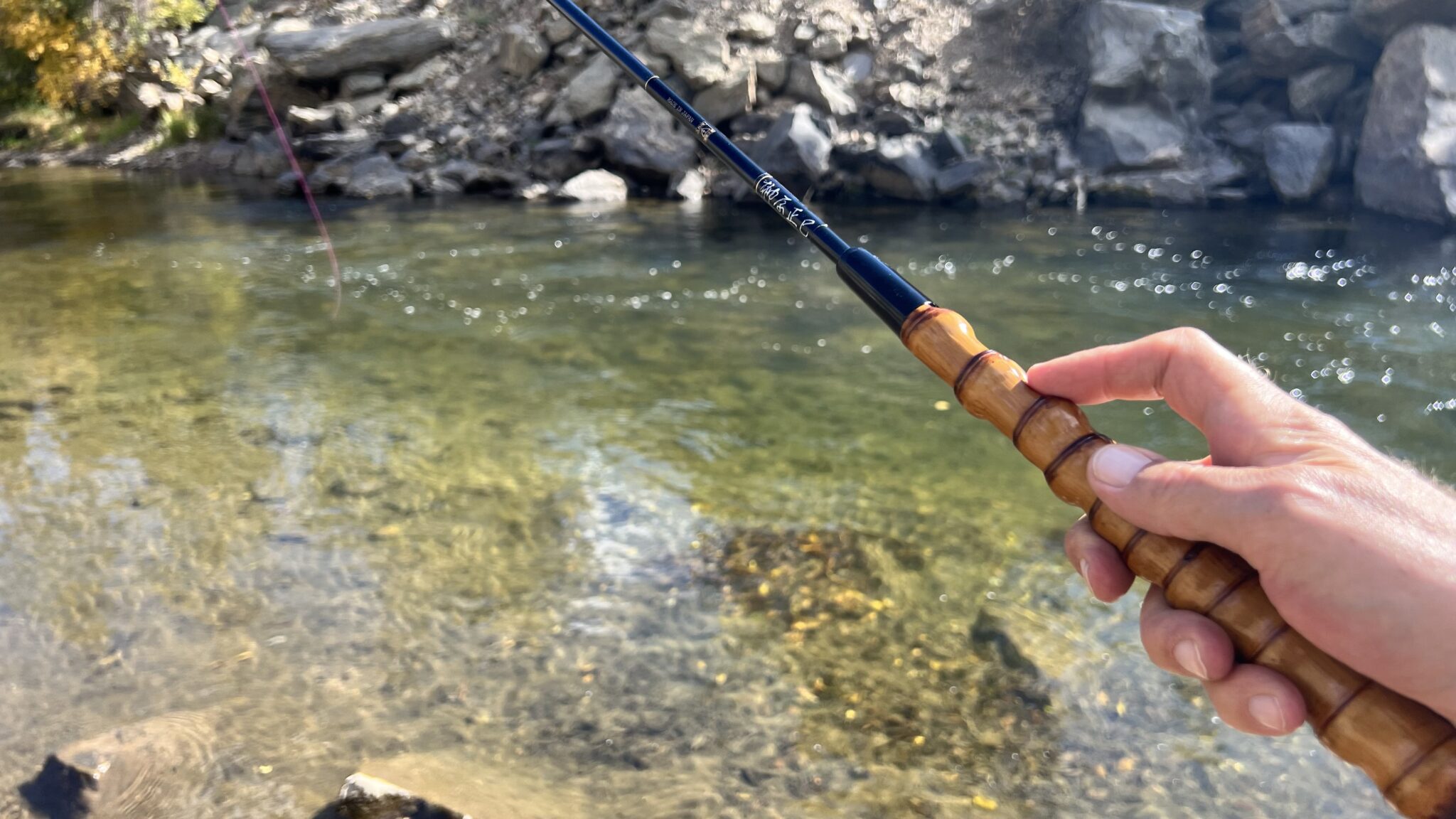
I got the Itoshiro 340 because I’d heard that it was essentially a shorter Type I with a crisper action. The Type I is my primary rod, and the one I’m most intimately familiar with, but as someone who came to tenkara with a conventional fly fishing background, I still have the western casting stroke in my DNA so faster actions feel natural to me.
I tend to think of rods as having “personalities”. Sometimes, I just feel like spending time with a slow, soft-action rod casually swinging wet flies downstream through long runs. Others days, I’m looking for a quick, nimble partner-in-crime to be my accomplice in some fast-action pickpocketing with dry flies. Each rod has its own virtues and talents, and depending on my mood, I just feel like being in the company of a particular character on a given day.
I wasn’t looking to fill a specific hole in my rod lineup–it was more that the idea of an 11′ 7:3 with the Oni action and bamboo grip was too irresistible! It just sounded like a rod I couldn’t wait to get on the water. And that prediction was dead on: the rod was everything I hoped it would be.
The Itsohiro 340 has all the hallmarks any owner of an Oni rod would recognize:
Low Swing Weight
Oni rods are known for their light feel in the hand, and the Itoshiro’s already low swing weight is further decreased with the addition of the bamboo handle. Desptie having a higher physical weight than other rods in its class, this bamboo version casts effortlessly and has no tip-heaviness so the perceived weight while casting is lighter. Remember that just because a rod is light on the scale doesn’t mean it will feel light in the hand. I’ve fished the Itoshiro all day many times without any arm fatigue, but more importantly, the low swing weight just makes casting feel more pleasurable (and less like labor).
In tenkara, we talk about “connection” all the time and how gear can be a distraction. When you can barely even tell you’re swinging an 11 ft. rod back and forth through the air, there’s one less thing between you and the fly–one less distraction. Once I get into my cadence, my Itoshiro “disappears” into the background and it’s just me and the fish. .
Crisp Action
Most of the rods I own are in the 6:4 category, but (probably because of muscle memory from western fly fishing) I seem to cast better with stiffer rods, so the 7:3 action is intuitive to me and fits my casting style well. I didn’t have to “learn” this rod. Right out of the box, it felt as if I’d owned it for years and we were just getting reacquainted.
The crisp action on the Itoshiro not only helps my accuracy but also gives me better agility to change directions, presentations, or execute non-standard casts (e.g. Oni Loops). It’s very responsive and obeys your commands nearly instantly, so that makes it feel more like the rod is working with you rather than something you have to make work for you.
In addition, the extra backbone makes a noticeable difference in the wind. I’m often fishing out in the wide open, or in a canyon that acts like a wind tunnel, sometimes I need a rod that can power through. I recall at least a couple of instances when I started the day fishing a 6:4 rod and went back to the car for my Itoshiro when the gales kicked up. There have been many windy days when I was glad I had the Itoshiro in my hand.
Rifle-scope Accuracy
Another signature of Oni rods is their excellent dampening. At the end of the cast, the tip can bounce or wobble, creating ripples in the line that can affect turnover by wasting energy transfer. Having intrinsically soft tips, tenkara rods are especially susceptible to this. But like its cousins, the Itoshiro has excellent dampening for more efficient turnover and better accuracy.
When I cast the Itoshiro, I love to watch as the line unfurls perfectly straight in that classic, magazine-cover loop. I imagine my index finger as a scope, and when I put my fingertip in the crosshairs, the line lands exactly where I’ve aimed. And during the cast, everything just feels “tight” and controlled. I never feel like I have to tame it or put extra thought or effort into making it do what I want. The rod loads up easily, then at the end of the cast, the tip springs back promptly to its relaxed position without excessive wobble.
Whenever I hear the word “Itoshiro”, the first thing that springs to my mind is “accuracy”. If there’s any rod in my collection that I have utter confidence in to pull off tricky casts in tight spots, it’s this one.
Fun Factor
The Itoshiro is as fun to land a fish on as it is to cast. The 7:3 rating doesn’t mean you’ll feel like you’re fighting a tadpole with a pool cue. The rod flexes very pleasingly–even on small fish–and once again, that high modulus graphite and sensitive bamboo handle telegraph every detail of the fight right to your hand. Connection!
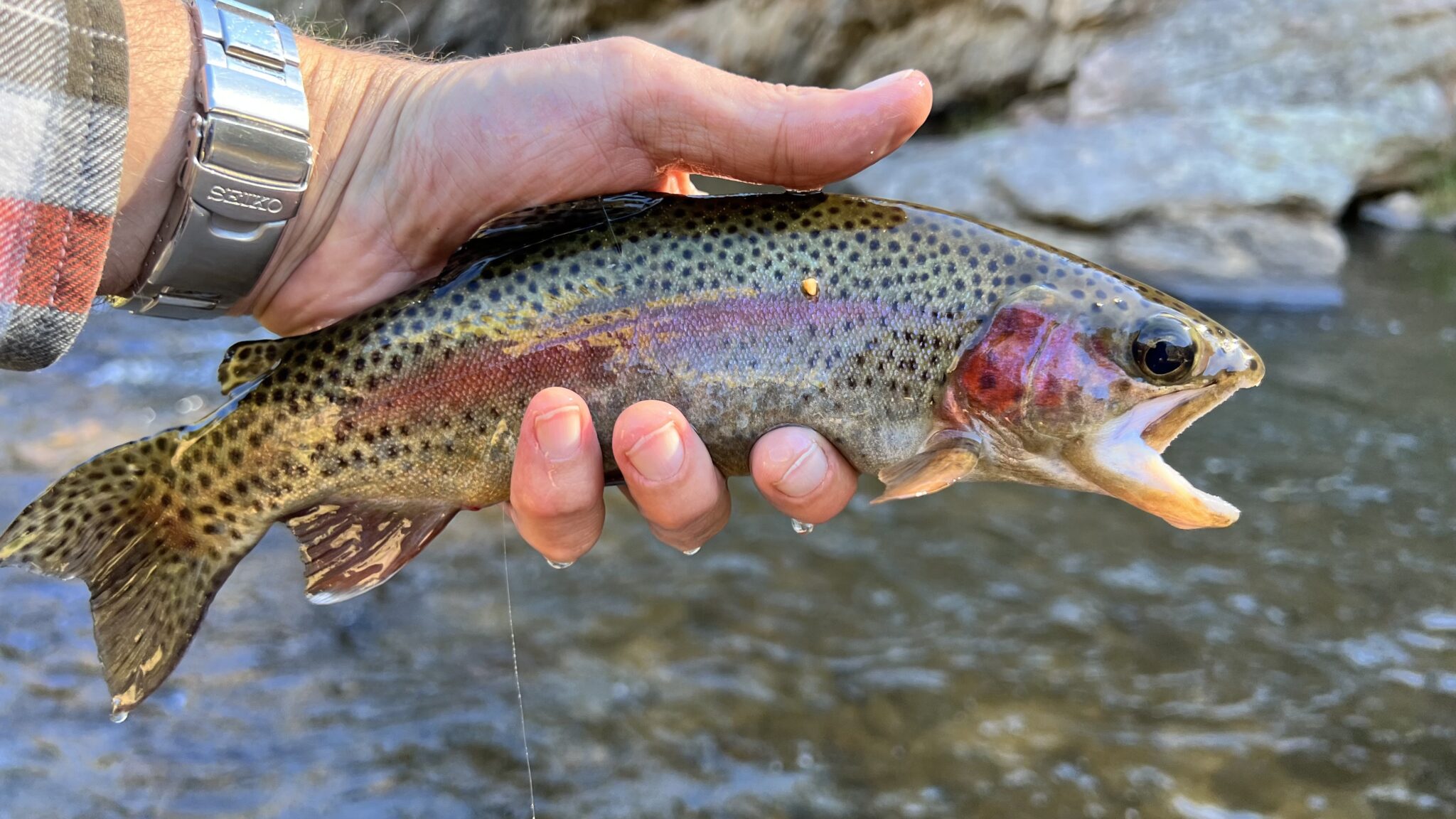
Field Notes
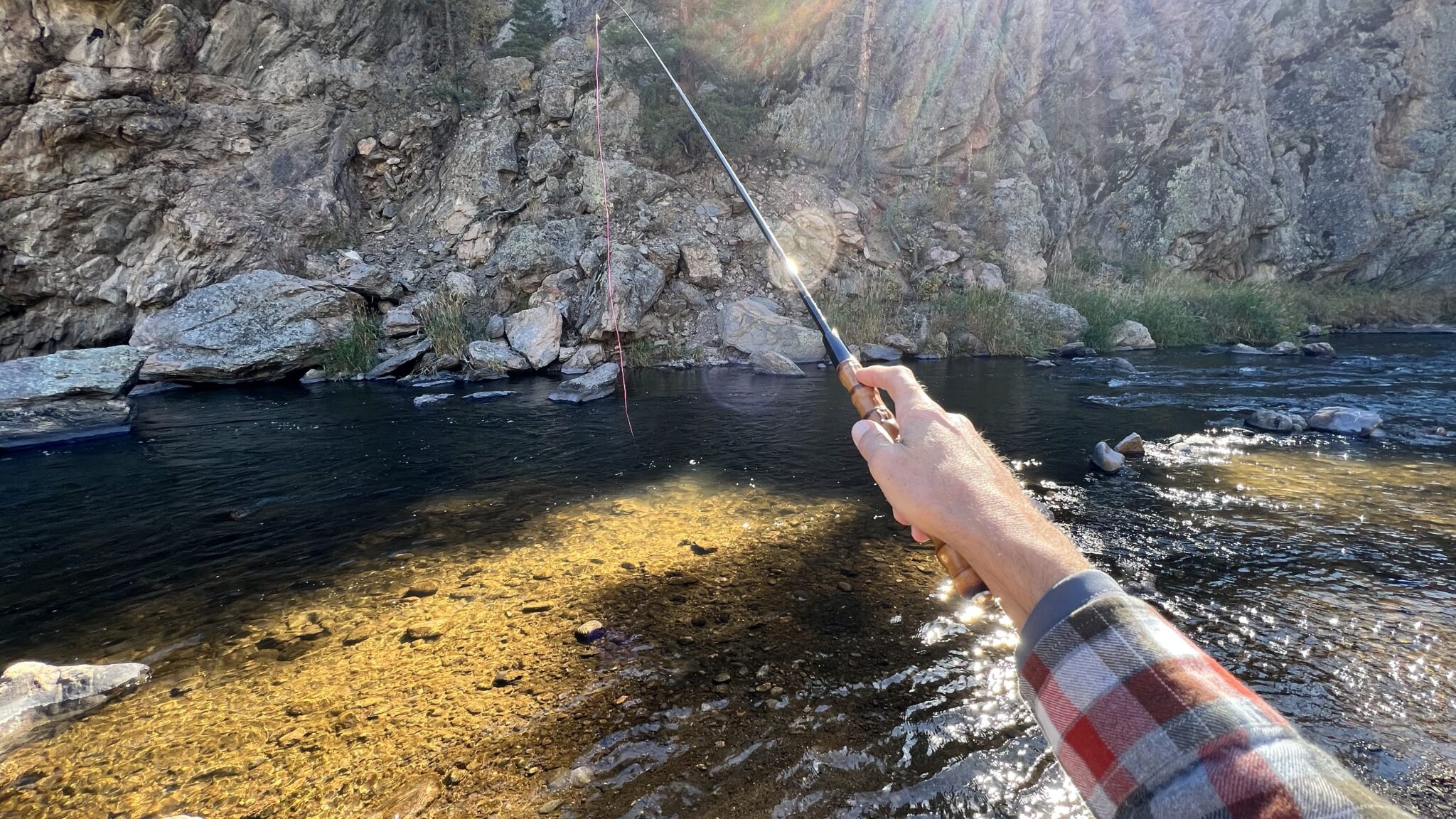
At this point, I’ve probably fished the Itoshiro in every scenario I typically face on my local waters. I’ve fished sakasa kebari, nymphs, dry flies, midges; pretty much every type of fly I normally fish on every type of water. I consider the Itoshiro a highly versatile rod, and really, the only limitation is its length (if I need a longer rod, I use my Type I).
I usually fish my standard #12 or #14 sakasa kebari, either unweighted or slightly weighted (with glass beads) because that seems like a comfortable size and weight for the Itoshiro. But it will certainly handle any fly you’ll likely to throw on small to medium sized rivers. And it really shines as a dry fly rod!
Stream Size:
I’ve been using the Itoshiro on streams, creeks, and rivers anywhere from 3 to 40 feet wide that have high gradients and a diversity of features: large pools, long runs, pockets, riffles, etc.. So I’ve been able to put it through its paces in just about every situation I can imagine–all of which the Itoshiro handled with ease. The rod is right at home on small to medium sized rivers and will handle longer lines well if you need more reach.
Recommended Lines:
#2.5, #3.0, #3.5 level fluorocarbon, or tapered nylon/fluorocarbon, 5x tippet.
I haven’t used a traditional furled line with the Itoshiro. I’m sure it would handle it; however, Oni rods are specifically designed to cast very light lines. I fish level fluorocarbon anyway, and will say that while casting, you can tell the Itoshiro was designed for fluoro or nylon. So I feel that in order to get the full experience Oni intended the user to have, it makes sense to pair it with the appropriate level or tapered nylon or fluorocarbon.
Of course, this will vary by line diameter, but in general, I find at least a 12.5′ loads well for a short line and have been using between 14′ to 15′ for a long line. A general rule of thumb is that tenkara rods tend to load best with a line at least about 1.5′ longer than the rod length. Sakakibara-san uses #2.5 and I usually use #3 or #3.5, but the Itoshiro will handle any level line size (as long as the caster can). For me #3 level fluorocarbon line is a great all around size for this rod and the right balance between power and delicacy.
Fish Size:
The largest fish I’ve caught on my Itoshiro so far has only been a 14″ brown trout, and it was a fair fight. I didn’t feel under-gunned at all and really enjoyed the battle. While I mostly catch browns and rainbows in the 6″-12″ range, I feel confident that if I hooked into a 16-incher, I’d stand a good chance; however, I would not recommend intentionally targeting 20″ fish. This is not a big game rod–it’s for small to medium sized fish.
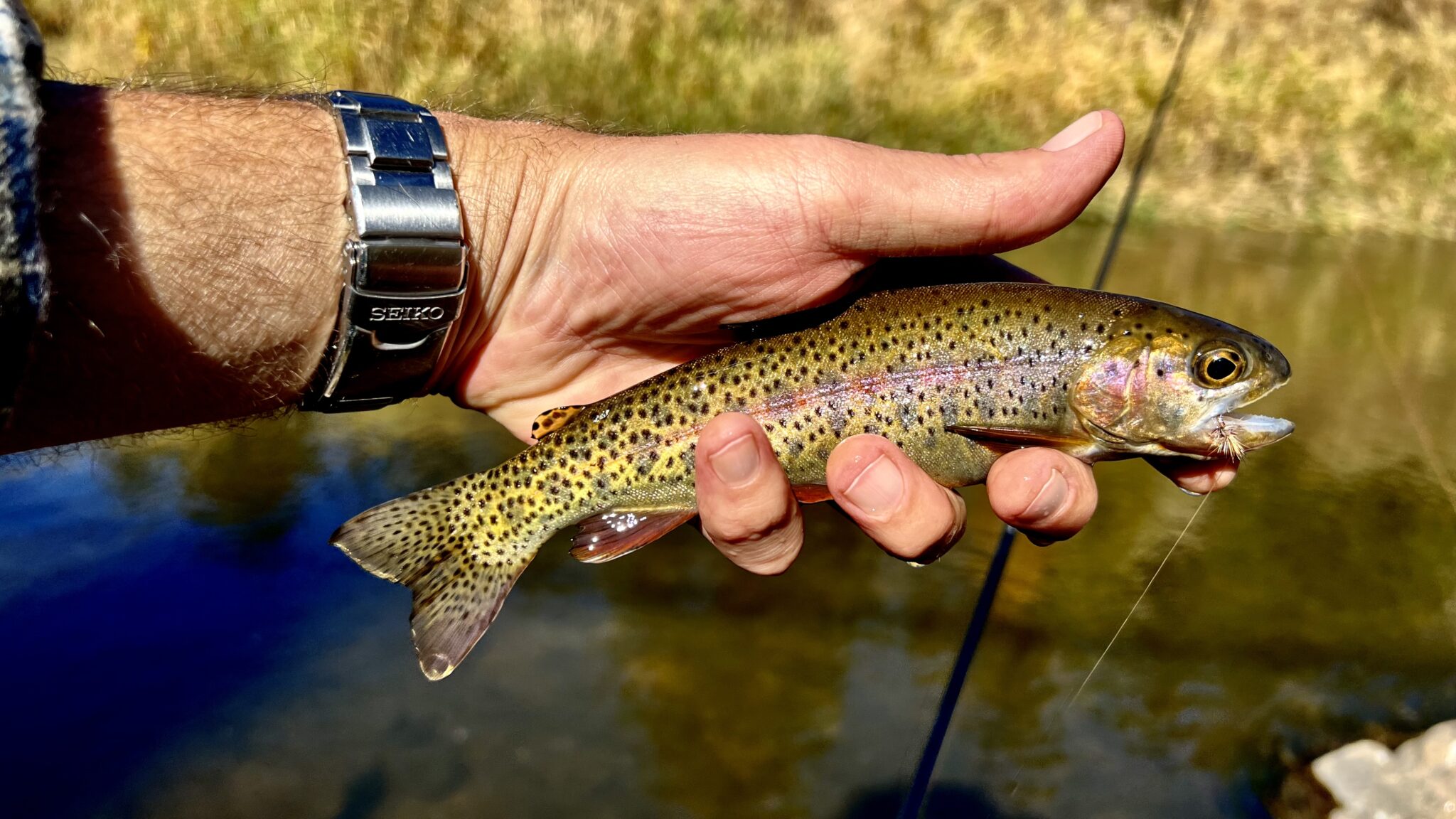
The Iconic Oni Bamboo Grip
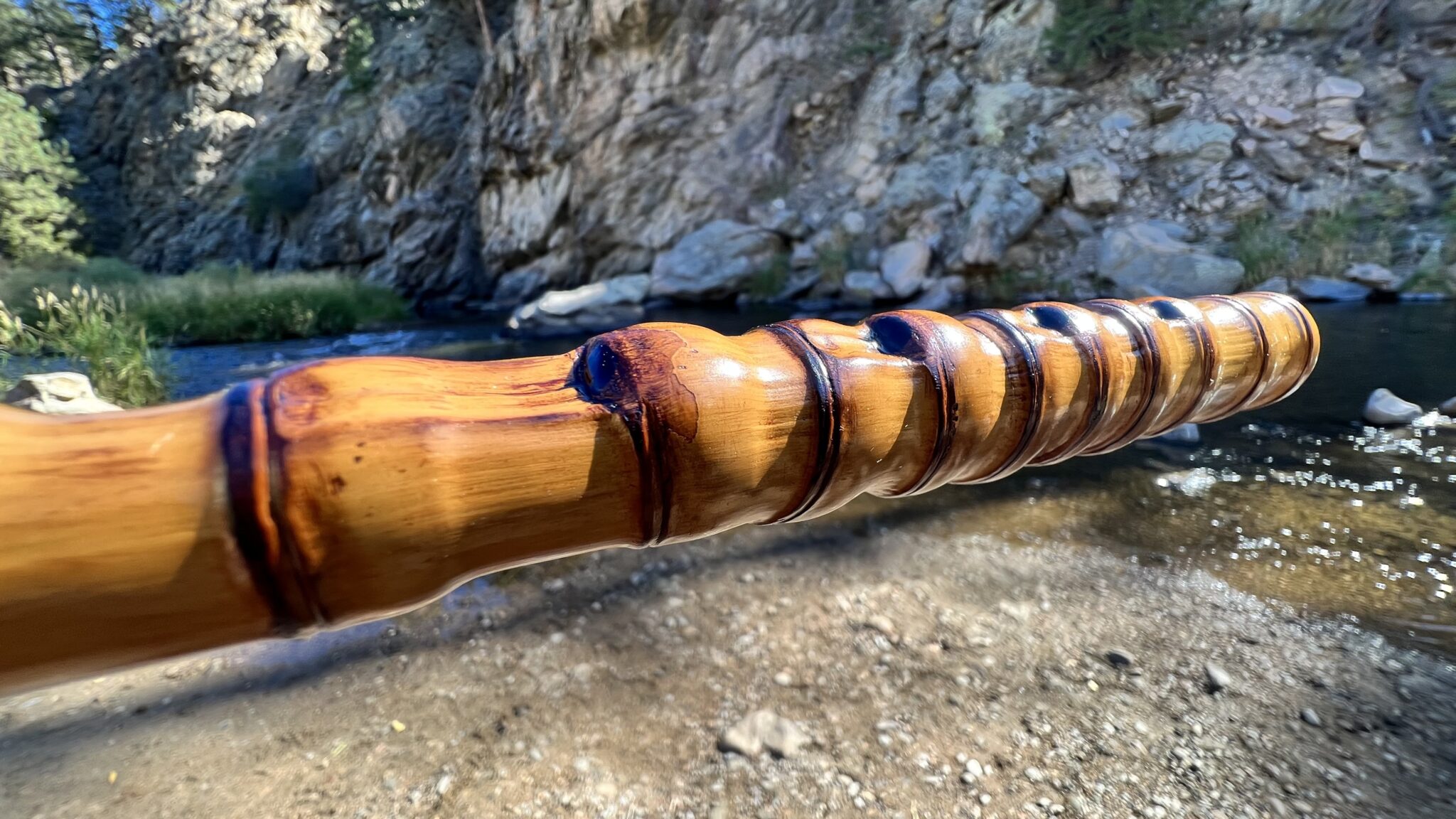
The Itoshiro is available with either a foam or a bamboo grip. I had been fishing a bamboo-handled Type I for 8 years, so I was already very familiar with all the hidden features that make it such a great ergonomic design.
Each handle is unique and I got to choose mine from a lineup of several others that were longer, shorter, or had different node patterns. Can you guess which one is mine?
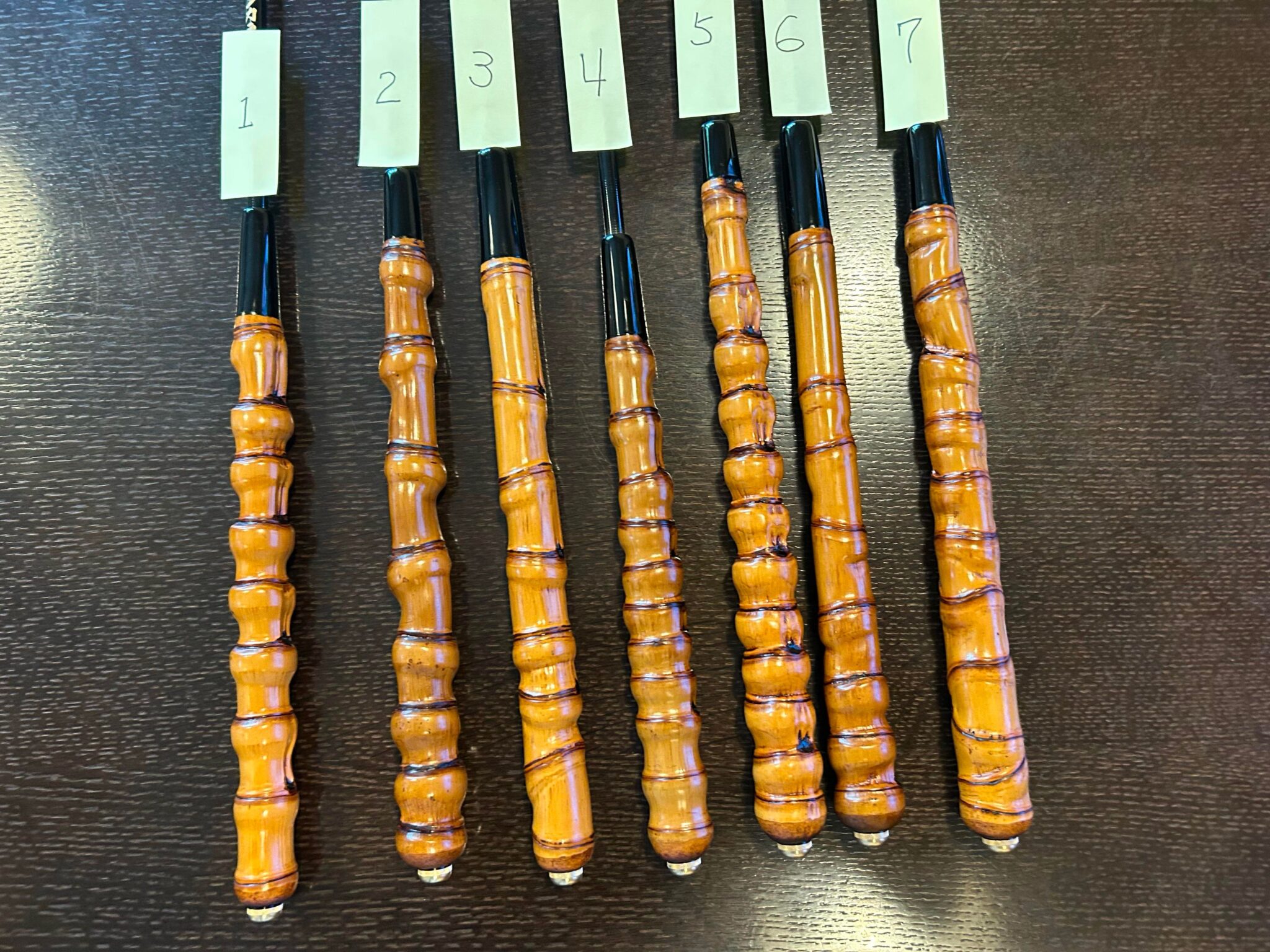
Most people assume the choice of a bamboo handle is purely aesthetic; however, it’s actually a functional one.
At first glance, these handles might just seem like random pieces of bamboo affixed to the blank; however, if you look closely, you’ll see there’s much more to them.
There’s a reason these rods are so scarce. For one thing, finding the right piece of bamboo is no easy task. It must have an appropriate diameter and nodes that are compatible with the form factor of the human hand. Then there are flaws or other characteristics that might make a certain piece unsuitable. It’s somewhat of an arduous process and Sakaibara-san is extremely selective, so only the best grass makes the cut.
Once the right bamboo is found, Sakakibara-san then hand carves notches of various length and depth at strategic locations along the handle to facilitate various grip styles. The notches correspond to different finger positions, and, in conjunction with the natural bumps and valleys of the bamboo’s nodes, make the grip feel uncommonly natural–like those finger grips on old steering wheels!
Watch the video demo below for a more detailed explanation
In addition to ergonomic comfort, perhaps counterintuitively, the heavier bamboo actually makes the rod feel lighter!
Since bamboo is heavier than foam, the extra weight at the butt end of the rod relieves weight from the tip. So despite the physical weight being heavier, this counterbalance effect makes the rod feel lighter during the casting stroke (as described above).
Simply put, the added mass of the bamboo creates an incredibly well-balanced rod!
And for those who rely on haptic strike detection, you might also notice this rod is somewhat more sensitive than many foam handles. Foam can have a dampening effect, but bamboo transmits vibration well, so you can feel every little bump of the line.
Hopefully by now, you see that there are reasons to consider the Oni bamboo grip beyond mere cosmetics. The better balance alone would be reason enough, but combined with the striking beauty of the bamboo, these grips are true examples of Bauhaus design theory, where form and function converge.
Hardware & Cosmetics
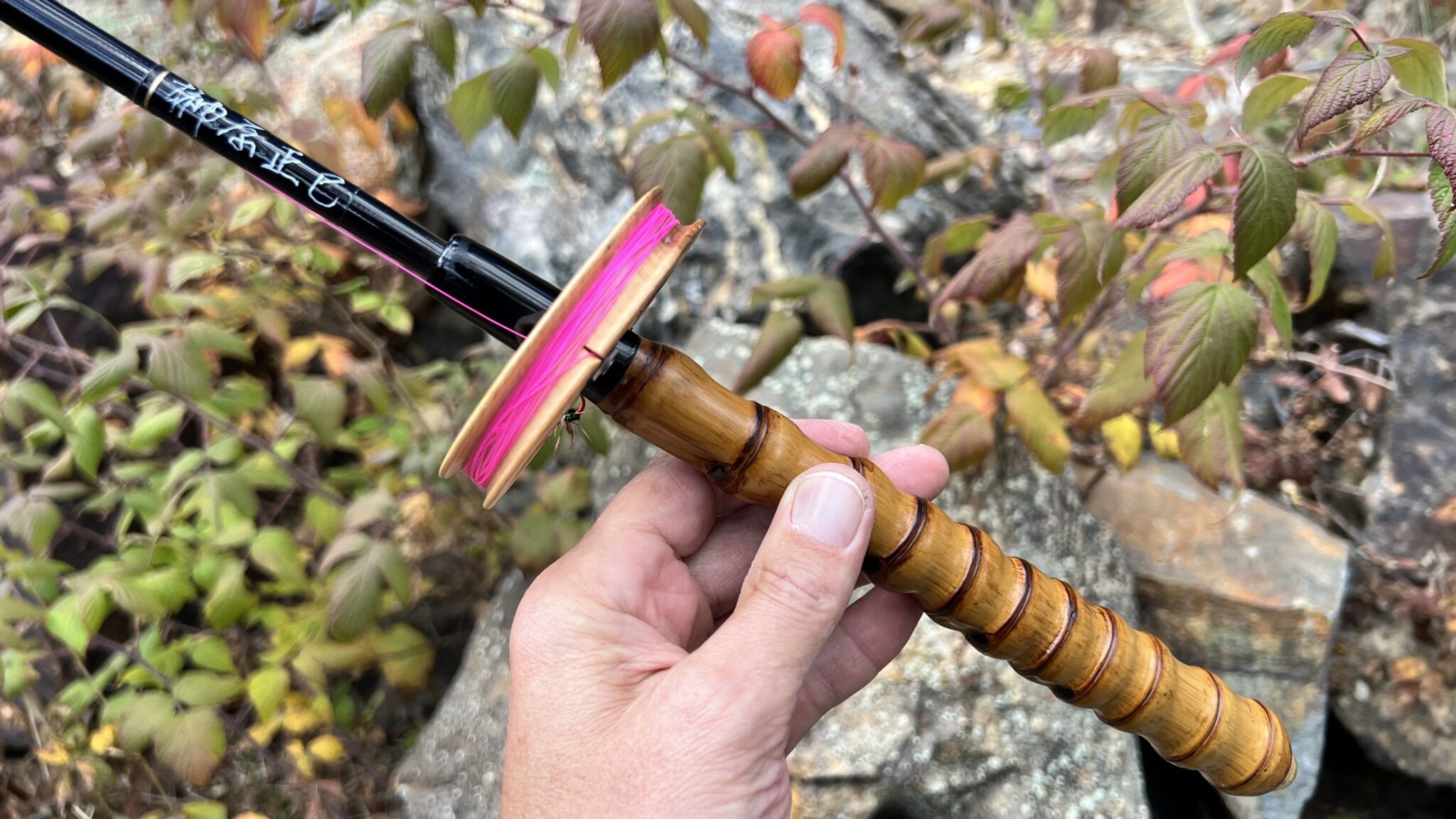
In typical Oni style, the Itoshiro is elegantly understated, with little more than minimal graphics, specs, and the Oni mark. Subtle gold accents tip the segments and the blank is a natural graphite grey that’s sanded, but not painted (to reduce weight). Overall, it has a classic, dignified look–well appointed, but not overdone.
To me, the look of my Itoshiro reflects the anachronistic nature of Japanese culture itself. Japan is a land of temporal and technological contrasts–where the ancient and the hi-tech coexist. You can buy a state-of-the art smartphone right next to an 800-year-old temple!
The traditional bamboo grip reaches out from the past to shake hands with the modern graphite blank, and while it might seem that they’d be mismatched, somehow, there’s no contradiction. The old and the new visually coexist on the Itoshiro.
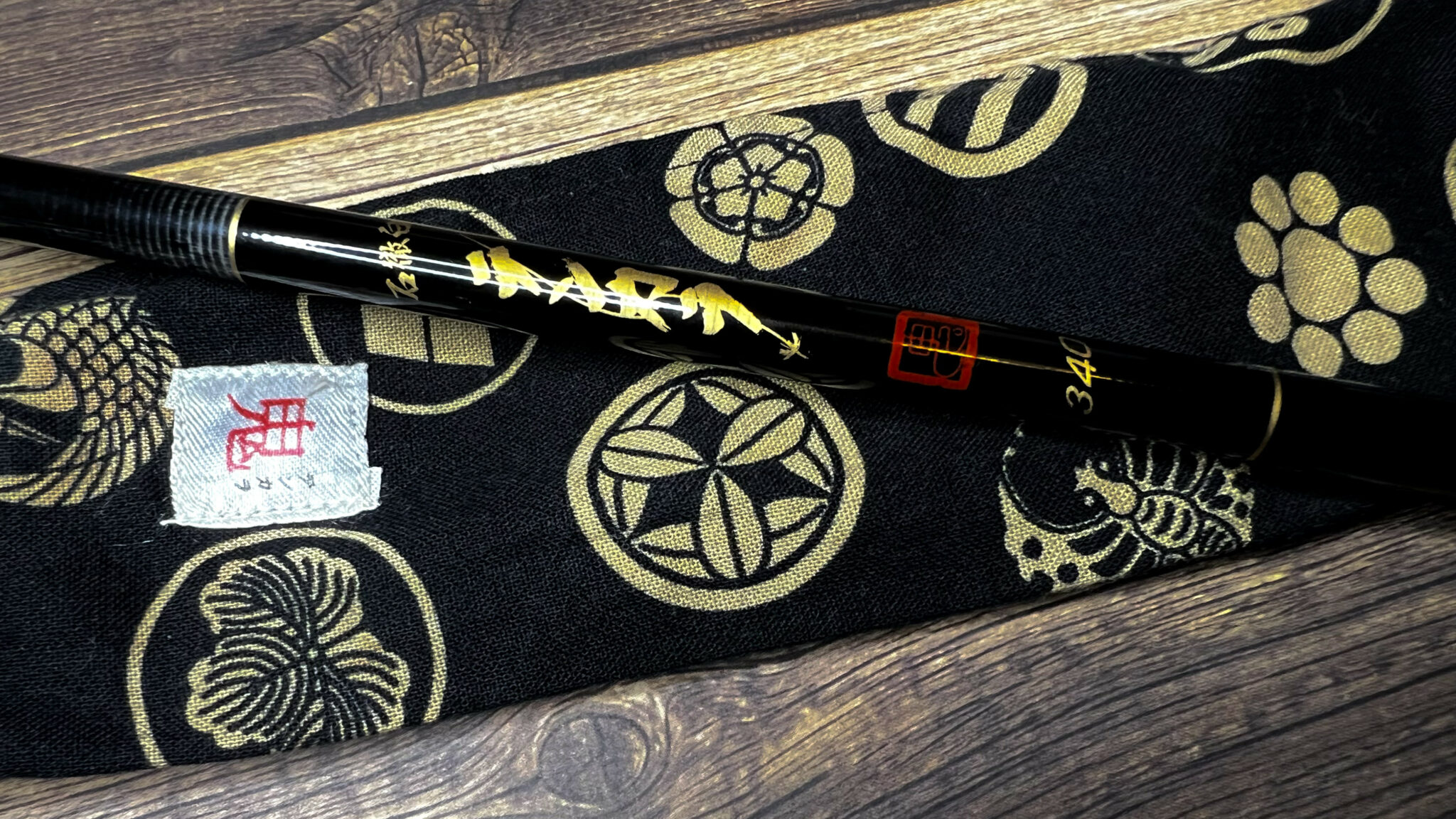
A brass end cap not only beautifully punctuates the grip’s end, but also further contributes to the counterbalance effect of the bamboo’s weight. It’s knurled around the edges and slotted at the base for easy removal and features a drain hole.
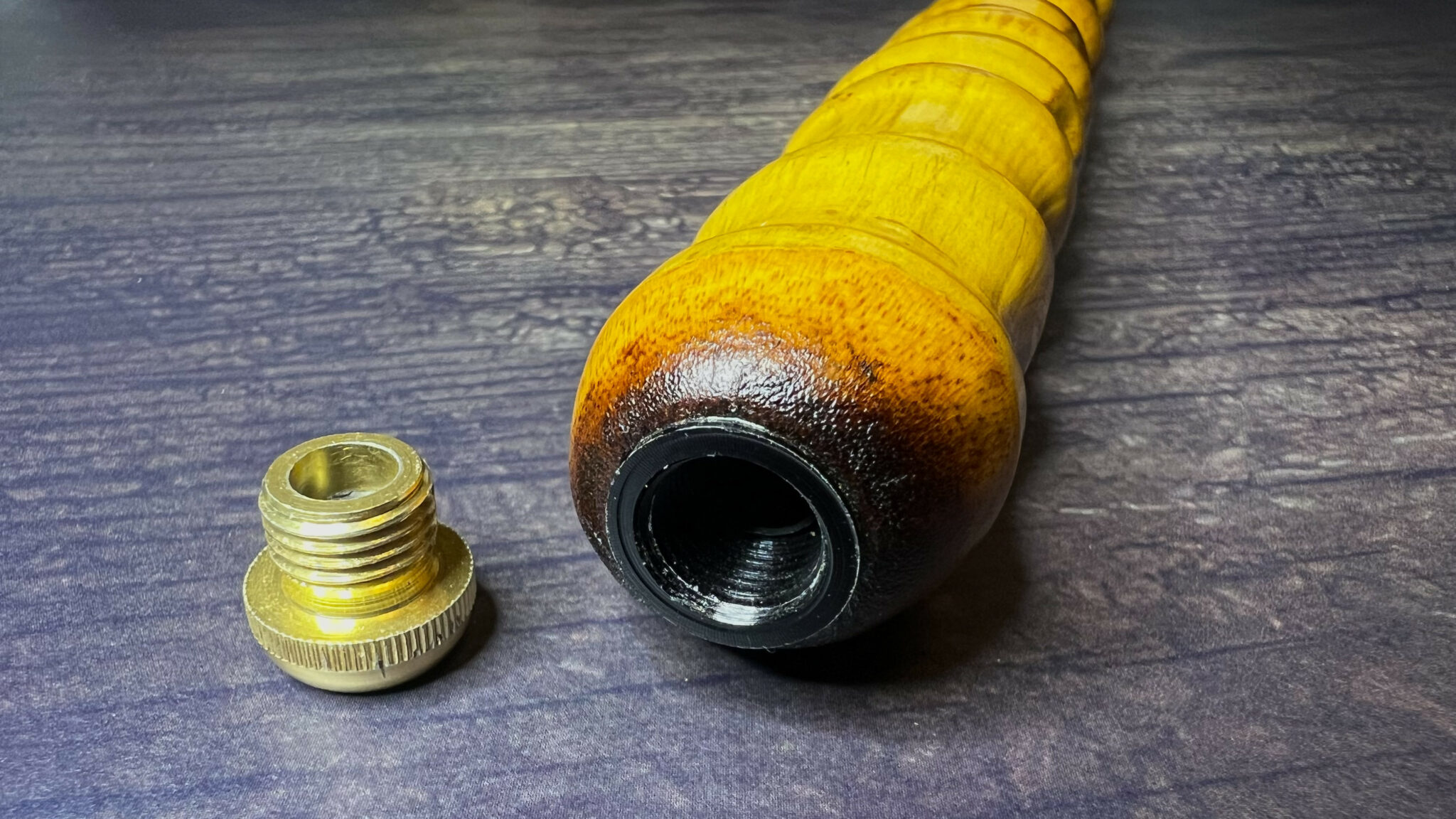
The lilian and plastic tip plug are standard Oni issue and are the same style as the Types I, II, and III. (Here you can also see the gold accents on each segment)
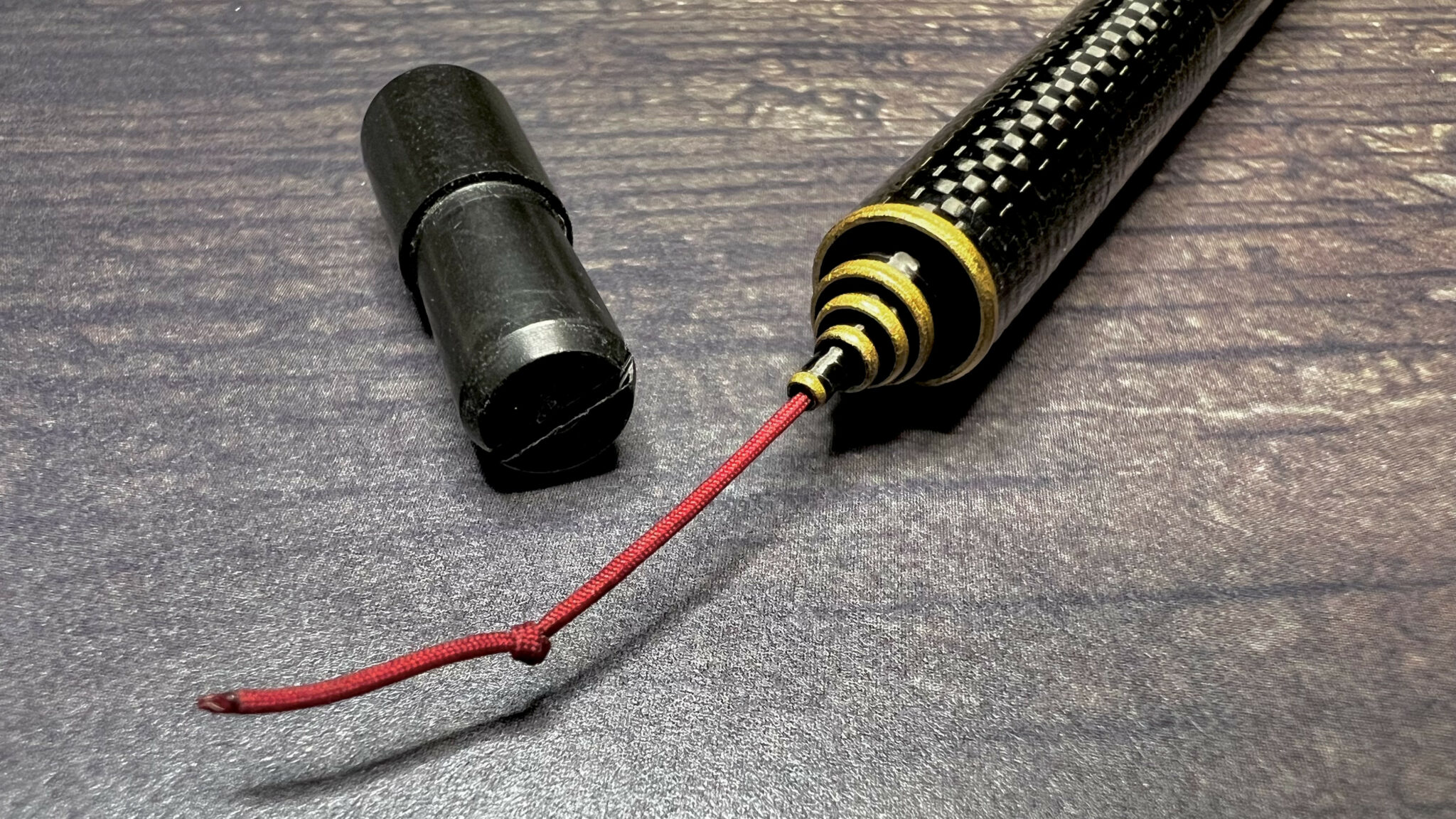
My Itoshiro is particularily special to me, because I was lucky enough to have Sakakibara-san autograph it at the 2023 Oni School in Utah (as well as my bamboo handled Type I).
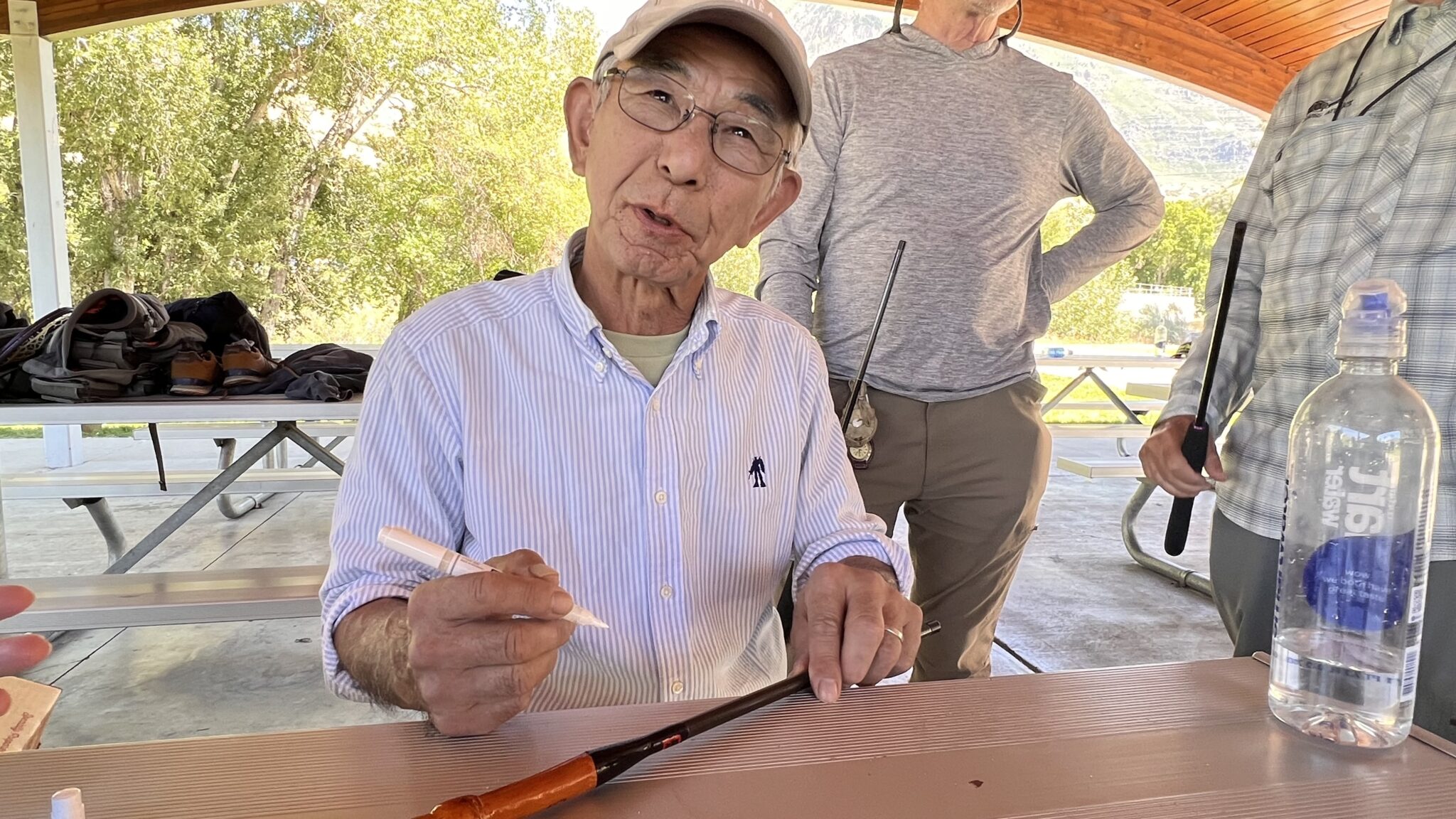
Now, every time I fish it, seeing that signature reminds me of the time I got to meet one of my tenkara heroes and fish with good friends.
How to get One
The bamboo handled Itoshiro is only available directly from the Oni Shop. As you’ve gathered by now, availability is sporadic and only a few rods are produced each year. So, my advice is that if you want one, get one immediately once you see they’re available. Otherwise, you might have to wait another 6 months or year. And there’s always an invisible “waiting list” of people ready to pounce on the next announcement (just like me).
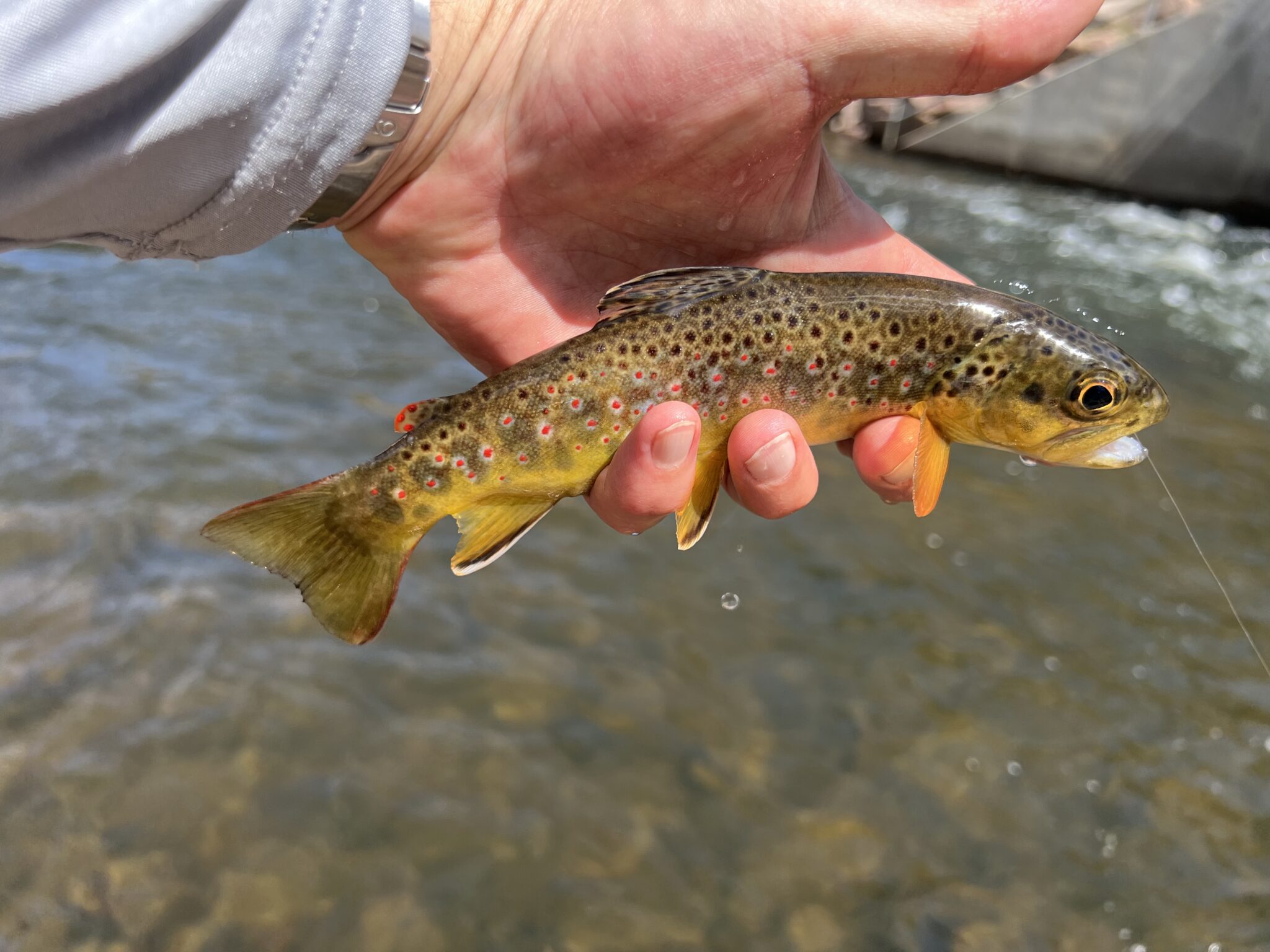
Whether you choose the foam or bamboo handle version, the Itoshiro 340 is an outstanding rod for small to medium sized streams that can handle a wide variety of flies and presentations. It’s quickly become one of my all-time favorites and the bamboo handled version only elevates the already incredible Oni experience!


